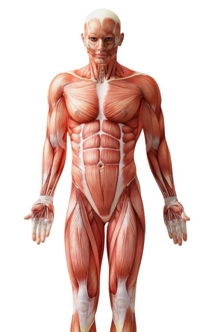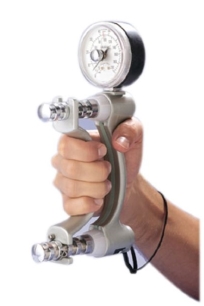What is Sarcopenia (or muscle loss) and how to diagnose sarcopenia?
November 27 2017
Most people have heard about osteoporosis or loss of bone. Surprisingly, very few people have heard about sarcopenia or loss of muscle, which apparently is more prevalent and insidious than bone loss.So what is sarcopenia?
Sarcopenia: As the name suggests, sarcopenia (Sarc means flesh; penia means loss) is the loss of muscle mass as you age. It is now clear that we lose muscle mass at rate of 1-2% per year in both men and women. It is estimated that by the age of 80 you will lose around 40% of your muscle mass!
What are the consequences of sarcopenia?
There are a number of serious consequences of sarcopenia or muscle loss. Some of the major ones are:- You slowly lose the ability to move and function, leading to physical disability
- You have a higher risk for falls. Falls in older adults can be very debilitating, especially if the falls results in a hip fracture
- Low muscle mass may also lead to institutionalization, hospitalization, and mortality
Now, what leads to sarcopenia?
Some of the factors contributing to this loss of muscle are:- Lack of physical activity
- Decrease in anabolic hormones, like testosterone, GH
- Increase in age-related inflammation
- Decrease in food intake and protein intake
Ok great. So how do you diagnose or sarcopenia?
It has been almost 30 years since the term sarcopenia was coined. Unfortunately, we are still struggling to come with a universal definition for identifying sarcopenia. If we can identify folks who are at a high risk of muscle loss, we can treat them better.- Original Definition: The first definition defined sarcopenia as muscle mass that is two standard deviation below the muscle mass of healthy young adults. Although this was fine for scientific purposes, for clinicians this wasn’t good at all. FDA and regulatory agencies don’t care about changes in muscle mass; they want to see changes in meaningful endpoints such as physical function or falls. For example, the FDA only approved bone density drugs when it showed it could decrease fractures from falls and not just an increase in bone density.
- Second Definition: The second definition was a major departure from the first definition; the new definition included loss of strength or performance in addition to the already included low muscle mass. This came through from a major realization that muscle mass is only weakly related to physical function in older adults compared to muscle strength. In fact, I am proud to say that my current mentor (Dr. Todd Manini) is largely responsible for showing this disconnect between strength and muscle mass in older adults. His papers introduced the term Dynapenia (loss of strength) and stressed the point that loss of strength should be the focus than the loss of muscle. As a result of his work and many others, the definition of sarcopenia now includes low grip strength and/or walk speed, in addition to low muscle mass.
- Latest Definition: Although the definition certainly improved, there was one major problem: The previous criteria or cut-offs for grip strength or muscle mass was based on single studies, which is not data driven or evidence-based. This prompted the NIH ( National Institute of Health) to create the sarcopenia project in 2010. The sarcopenia project combined 9 large, diverse studies (almost 25,0000 participants) to come up with cut-offs for grip strength and muscle mass to identify sarcopenia.
- ICD Code: Recently, after much campaigning, CDC has finally established an ICD (International Classification of Diseases) code for Sarcopenia. ICD code is used extensively to classify diseases, and other health problems Establishing an ICD code means that clinicians, policy makers, researchers can now treat sarcopenia as an actual disease/condition than some vague condition that is talked about
What is the recommended criteria for sarcopenia based on FNIH

- Grip strength is measured using the Jammar dynamometer (<16 kg for Women and < 26 kg for Men).
- Muscle mass is measured using DEXA
Ok . Now tell me how I can prevent sarcopenia?
- Drugs: Currently there are no drugs approved to prevent muscle mass loss. Testosterone administration has shown to increase muscle in older adults, but the improvement in strength or physical function is inconsistent. .Also, there are some cardiovascular and prostate cancer risks associated with testosterone supplementation .
- Exercise: Exercise has shown to delay or prevent the loss of physical function. Currently, strength training is the only effective strategy to increase or preserve muscle mass.
What is my opinion on this topic?
- My personal opinion is that just like you don’t wait to see if you have a higher risk of getting lung cancer if you smoke, you shouldn’t wait till you have been diagnosed as sarcopenic to start exercising. There are so many benefits to exercise and increase in muscle mass just happens to be one major benefit.
- Bone density drugs are usually prescribed to prevent fractures. But what many people are not aware is that the majority of fractures are due to falls. And low muscle strength is a major risk factor for injurious falls. So if your bone density is low and you are worried about fractures (and you should be), preventing falls makes more sense to me than just increasing bone density. Most people talk about strength training as a way to increase bone density to prevent fractures, but the increase in muscle strength may be more important when it comes to preventing fractures. ·
- Grip strength is obviously cheaper than getting a DEXA., which could cost a couple of hundred dollars. However, if you try your grip strength (and most gyms have a grip strength tool)you have to make sure you are using the Jammar dynamometer. They are the gold standard.
Conclusions
Here you go.- Remember as you go past 40, you will start to lose muscle mass
- This loss of muscle may lead to some dire consequences, such as loss of physical function, hospitalization, and falls
- Like it or not, the only effective way to minimize muscle loss is through exercise, especially strength training.






